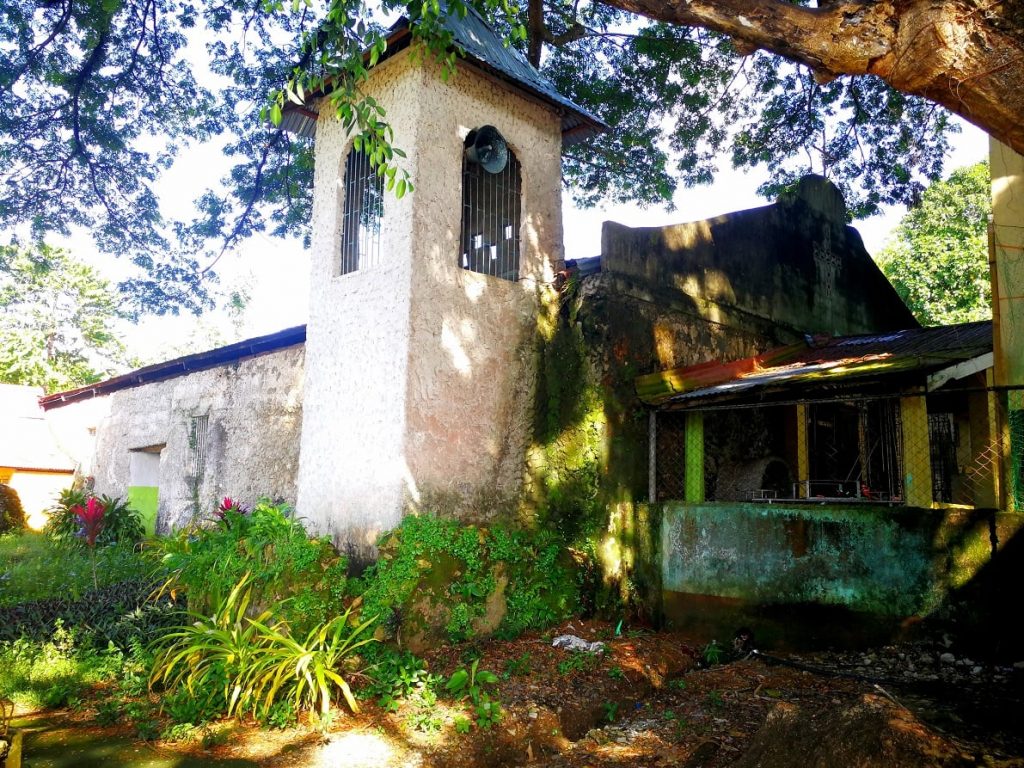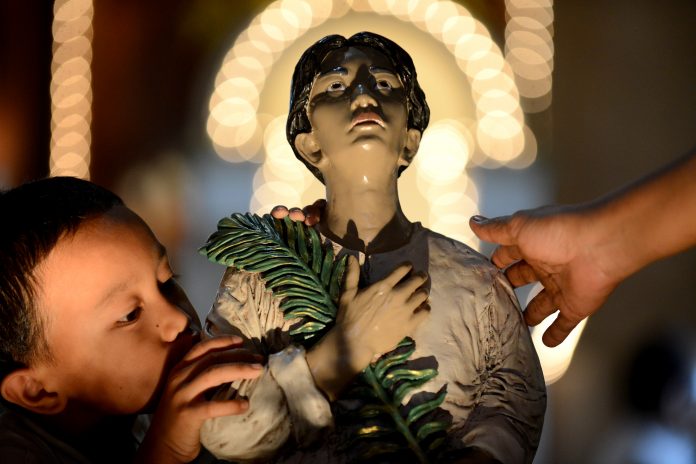A Filipino historian claimed that he has discovered the birthplace of San Pedro Calungsod, a young Filipino migrant who was declared martyr of the Catholic Church in 2012.
Dr. Rolando Borrinaga, a historian from the central Philippine region of Eastern Visayas, claimed that San Pedro Calungsod was born in what is now the city of Baybay in the province of Leyte.
He presented this theory following what he described as the pervading “problematic and in contention” records of the saint’s origin even after his canonization.
Borrinaga’s claim followed other assertions of the birthplace of the saint that include the town of Ginatilan in Cebu province, Hinunangan in Southern Leyte, and Loboc in Bohol province.
Few details of the early life of Calungsod (spelled Calonsor in Spanish records) are known.
Historical records do not mention his exact birthplace or birth date, and merely identified him as “Pedro Calonsor, el Visayo.”
Historical research identifies Ginatilan in Cebu, Hinunangan, and Hinundayan in Southern Leyte, and the Molo district of Iloilo City as possible places of origin; Loboc, Bohol also makes a claim.
Of these claims, the ones from Molo, Iloilo and Ginatilan, Cebu, are considered the strongest. Nonetheless, all four locations were within the Diocese of Cebu at the time of Calungsod’s martyrdom.
Proponents of an Ilonggo origin argue that in the early Spanish period, the term “Visayan” exclusively referred to people from the islands of Negros or Panay, whereas people from Cebu, Bohol and Leyte were called “Pintados.”
Thus, had he been born in Cebu he would have been referred to as “Calonsor El Pintado” instead of “Calonsor El Visayo,” the term “Visayan” receiving its present scope sometime the 1700s.
However, American historian and scholar John N. Schumacher disputes the Bisaya/Pintados dichotomy claim as at that time the Pintados were also referred to as Visayans regardless of location and said Calungsod “was a Visayan” and may have been but doubtfully “from the island of Cebu” or “could have come any other Visayas islands.”
The proponents of Cebu as the saint’s birthplace reasoned that Ginatilan contains a high density of people surnamed Calungsod, and that during the beatification process they were the initial claimants to having been Calungsod’s birthplace.
The Calungsods of Iloilo also claim to be the oldest branch, based on baptismal records containing the surname “Calungsod” dating to circa 1748, compared to branches in Cebu and Leyte which possess baptismal records dating only to 1828 and 1903, respectively.

Borrinaga’s paper titled “San Pedro Calungsod: The Bisayan Saint from Leyte” claimed that the saint was born and was baptized as Pedro Calonsor in Baybay.
“A source gave the date 21 July 1654 for his birth, but this could have been earlier, just before the linguistic shift from ‘r’ to ‘d’ in many Bisayan words in the aftermath of the Sumoroy Rebellion in 1649-1650,” wrote Borrinaga.
Historical claims noted that Calungsod was born in the aftermath of the Sumoroy Rebellion in 1649-1650, which was considered the first major insurrection to explode during the initial century of Hispanization and evangelization of the Philippines.
Borrinaga wrote that the rebellion started in the town of Palapag in northeastern Samar in the evening of June 1, 1649, when Agustin Sumoroy killed Father Miguel Ponce, rector of the Jesuits in the town.
The historian said that Baybay was a separate Jesuit mission station about 1620, and the “Calonsor” family, before they became “Calungsod,” must have served as musicians and members of the choir during Sunday Masses.
“[Calungsod] grew up in the deeply religious environment of his family, who presumably agreed for him to become a full-time stay-in sacristan of the Jesuit missionary assigned in their town when he came of age,” wrote Borrinaga.
Calungsod became a sacristan and trusted assistant of Jesuit priest Diego Luis de San Vitores who established the Christian mission in the Ladrones Islands, which he renamed as Islas Marianas.
The priest and Calungsod were martyred by the natives of the islands on April 2, 1672.
Borrinaga theorized that before the Marianas mission Father San Vitores and Calungsod might have known each other through Father Domingo Ezguerra, SJ, the Jesuit Provincial in 1666.
Father Ezguerra was vice provincial at the Carigara Residencia in Leyte before he was named head of the Jesuits in Manila.
The historian said he might have brought along two sacristans when he moved to Manila “and one of them must have been Pedro Calungsod, a sacristan from Baybay pueblo.”
When Father San Vitores received the royal decree for the Marianas mission in 1666, Father Ezguerra presumably helped him plan, organize and recruit personnel for this new venture.
“And he must have strongly recommended Calungsod as a trustworthy boy who could serve as sacristan and aide to Father San Vitores before he returned to Leyte after his term,” he added.
Borrinaga said he hopes the Diocese of Maasin, which covers Baybay, “will do something about this claim” as part of the observance of the 500th anniversary of the arrival of Christianity in the country in 2021.
The diocese will spearhead the celebration next year with the anniversary of the first Easter Sunday Mass supposedly held on the island of Limasawa on March 31, 1521.
The diocese welcomed Borrinaga’s study.
“If our foremost historian could prove that Sand Pedro Calungsod was from Baybay, Leyte, the Diocese of Maasin will rejoice beyond measure,” said Monsignor Oscar Cadayona.
The priest said the saint “could be one of the greatest proximate fruits of the First Easter Mass in Limasawa.”
Calungsod was beatified on March 5, 2000, by Pope John Paul II, and canonized by Pope Benedict XVI at Saint Peter’s Basilica in the Vatican on October 21, 2012.









